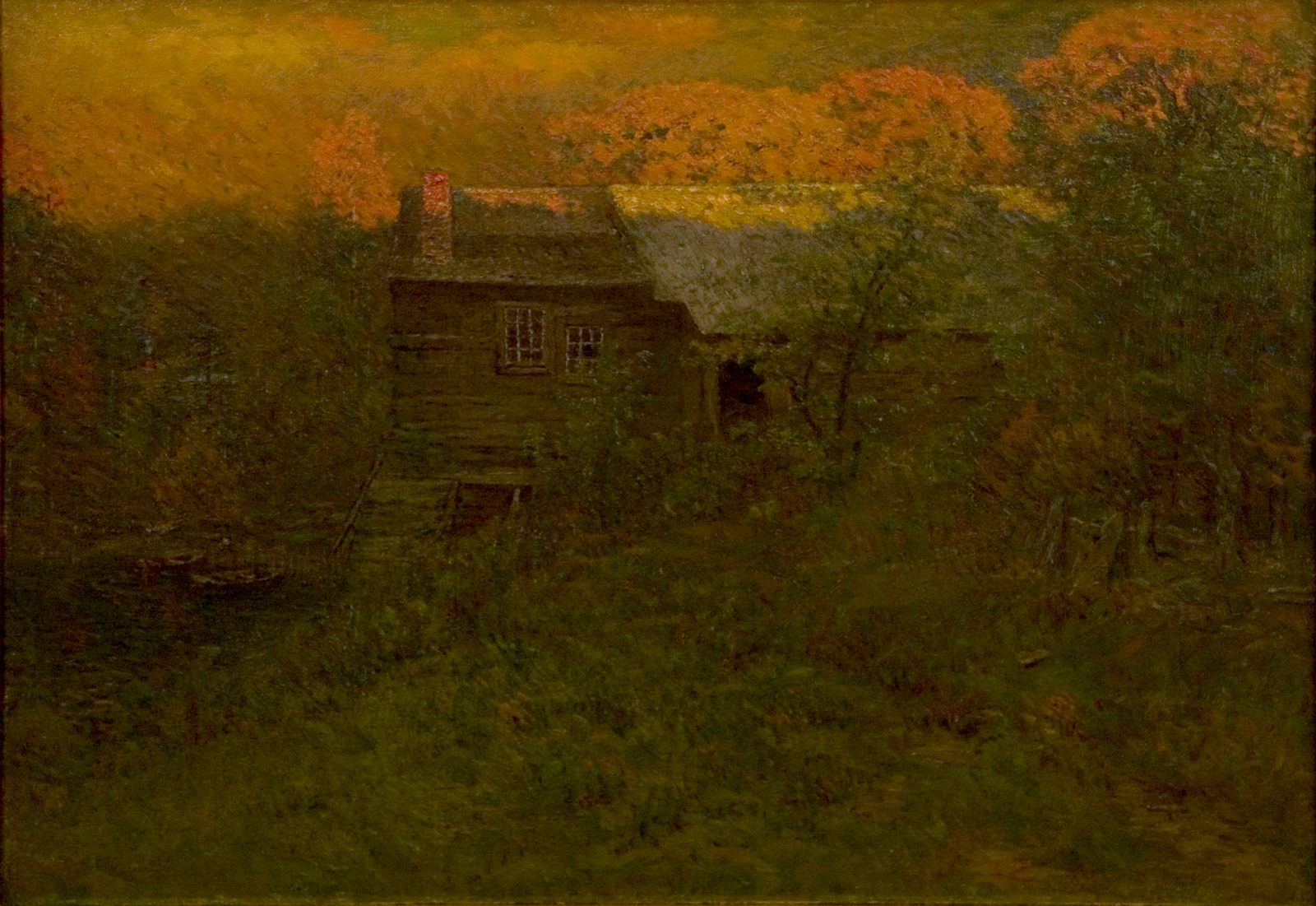John Joseph Enneking
John Joseph Enneking (1841-1916) is sometimes called America’s first Impressionist. Born in Minster, Ohio, Enneking moved to Cincinnati at age 16 after both of his parents died and began his formal artistic training at Mount St. Mary’s College. His studies were interrupted by the outbreak of the Civil War — he joined the Union Army, returning to Cincinnati after being injured and subsequently discharged. After a lengthy recovery, Enneking moved first to New York in 1864, where he lived only briefly, then settled in Boston, where he resumed his artistic studies, learning lithography and painting under the tutelage of Samuel Gerry. In 1872, Enneking departed for a four-year trip to Europe. He studied first at the Munich Academy of Germany and then in Paris with Leon Bonnat and Charles Daubigny, also working alongside Jean Millet, Claude Monet, Camille Pissarro, and Camille Corot. This group of Tonalists and Impressionists would deeply influence Enneking’s art.
He returned from Europe to establish a permanent residence in Hyde Park, just outside of Boston. Enneking was a fixture in the Boston art scene, becoming especially well known for his Tonalist twilight images of New England landscapes. He exhibited locally as well as at the National Academy of Design, the Pennsylvania Academy of Fine Arts, and the Art Institute of Chicago. Enneking started spending summers in North Newry, Maine, sometime in the 1880s, with frequent sojourns to the White Mountains of New Hampshire, where he would paint en plein aire. Enneking’s reverence for the land was deep, and extended beyond painting to environmental conservation — he was even elected to be a Park Commissioner in Boston.
